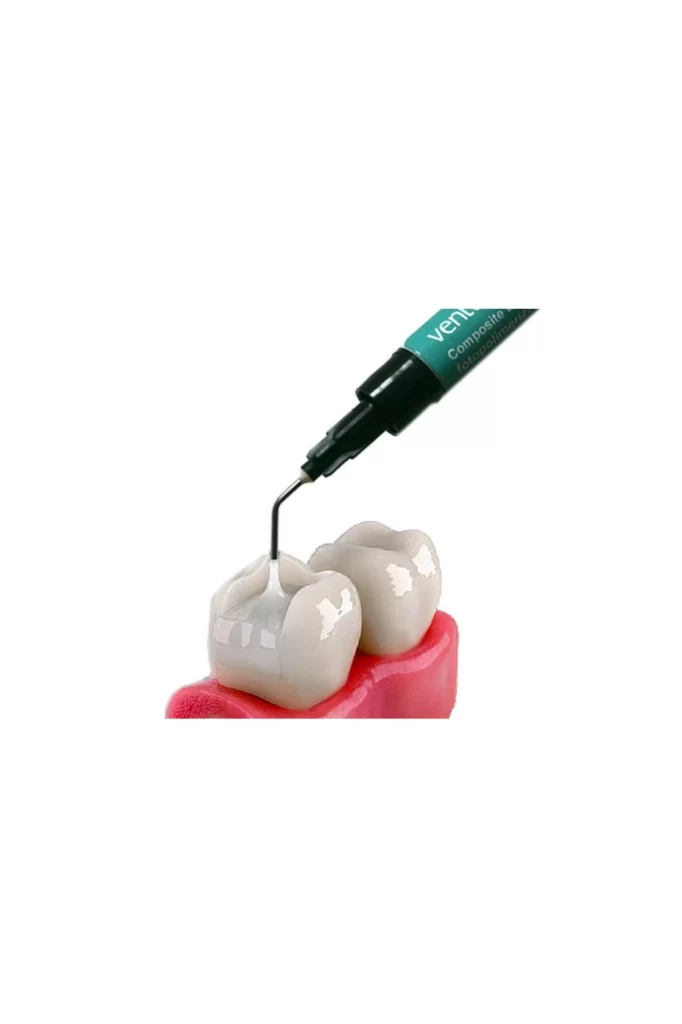
In today’s dentistry, dental composites are frequently utilized to repair broken or rotting teeth. Composites are materials with a hue similar to teeth that are constructed of fillers and a resin matrix. They are frequently used to repair chips and cracks, fill cavities, and straighten teeth. Dental flow composite, a novel class of dental filling material, has, however, appeared in recent years. The distinctions between dental flow composite and conventional composite will be covered in this blog. Read about the Solea dental laser.
What is a Dental Flow Composite?
It is a form of composite resin material called that has a lower viscosity than conventional dental composite. It is a flowable substance that can fit the shape of the tooth and be applied in spaces that are challenging to access with conventional composite. It is easier to work with and may flow into small places more readily due to its reduced viscosity. A resin matrix and fillers make up a dental flow composite, just like a regular traditional filling material. Read about the dental composite gun.
How Does the Dental Flow Composite Work?
The application of dental flow composite is comparable to that of conventional composite. It is frequently used to repair chips and cracks, fill cavities, and contour teeth. It is more suited for use in regions that are challenging to access with traditional composite due to its reduced viscosity, nevertheless. It can be injected into tight places between teeth and better conforms to dental shapes.
Another application for dental flow composite is as a basis or liner for other filling materials. It can act as a barrier between the filling material and the tooth and safeguard the tooth pulp. This may lessen sensitivity and lengthen the useful life of the restoration. Find out about the dental bridge procedure.
Can Dental Flow Composite and Conventional Dental Composite be used together?
Absolutely, a restoration can use both dental flow composite and conventional dental composite. A composite repair with layers is what this is. Using various dental composites multilayered composite restorations result in a more realistic appearance that closely resembles the shade and structure of the neighboring teeth. What is the best dental implant you have used?
In layered composite restorations, dental flow composite is frequently used as the first layer. This is due to the material’s flowable nature, which enables it to conform to and flow into the contours of the prepared tooth surface, forming a solid bond and smoothing out any minor imperfections. To give the restoration the desired shape and contour, a more conventional dental composite can be added on top of the flowable composite after it has been applied. Learn how to clean dental bridges.
Advantages and Disadvantages
Advantages
First of all, because of its lower viscosity, it is simpler to work with and can better conform to the shape of the tooth. As a result, it can be used in places that are challenging for standard composites to fill, like deep cavities or small gaps between teeth. All you need to know about dental implant healing stages.
Compared to conventional dental composite, dental flow composite has more filler. Because of this, it is more resistant to wear and more durable than conventional dental composite. Moreover, it becomes more radiopaque, making it simpler to view on X-rays.
Furthermore, compared to conventional dental composite, dental flow composite is less susceptible to moisture. It can therefore be applied in situations where moisture management is challenging, such as with individuals who have significant saliva flow. Because of this, it is more adaptable than conventional dental composite. Do you know the difference between dental implant and bridges.
Last but not least, it has a beautiful appearance. It matches the adjacent teeth and is tooth-colored like the conventional dental composite. It can therefore be utilized to rebuild teeth without the need for unattractive metal fillings. Have you ever had a dental laser treatment?
Disadvantages
It is still not as strong as other dental materials, including metal or ceramic, despite having a larger filler percentage than regular dental composite. This may not be advantageous for the molars or other parts of the mouth that experience a lot of stress. In certain situations, a stronger substance could be necessary to guarantee the durability of the restoration.
Not all dental restorations can be made with dental flow composite. Little to medium-sized cavities and locations that are challenging to access with conventional composite are its ideal applications. It might not be appropriate for spaces that need a lot of structural support or have extensive cavities. What is your best dental implant alternative?
Compared to standard conventional composite, dental flow composite is often more expensive. For people on a tight budget or without dental insurance to cover the expense of the surgery, this may be a drawback. Read about what not to eat after dental implant.
It may be more challenging to remove than conventional filling. This is due to the material’s flowable nature, which can make it challenging to tell where the restoration ends and the tooth begins. This may make it more difficult for a dentist to take out the restoration if one day it needs to be changed. Take a look at dental adhesives.
Conclusion
A more recent type of filling material known as the dental flow composite is superior to conventional dental composite in many ways. Its reduced viscosity makes it simpler to work with and mold to the shape of the tooth, while its larger filler content increases its wear- and durability-resistance. It can be used in places where moisture control is challenging since it is less sensitive to moisture. However, because to its increased qualities, it is more expensive than conventional dental composite. Dentists should take each patient’s unique demands into account when determining which kind of composite material to employ. Have you heard about the dental curing lights.